The most common types of background grass in our aquatic plant landscape are: red willow, blood orchid, small opposite leaves, Newton, big red leaves, fine-leaved water celery, snowflake grass, etc. Next, we will introduce more aquatic plants to you.
Blood orchid
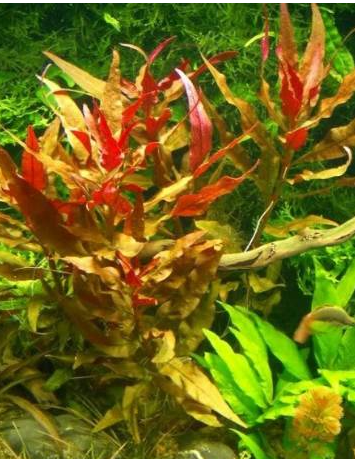
Dicotyledonous plant, aquatic water grass. Water grass has lanceolate leaves, cross-opposed, the leaf surface of mature leaves is usually green, the back of leaves is green with red, and the young leaves are red. White spherical inflorescences can grow in the axils of leaves, which are easy to bloom. The internode spacing is longer in summer and shorter in winter. It can be cultivated in water for beautiful varieties, with wine red to deep vermilion underwater leaves. The underwater leaves are slightly larger, and the leaf margins are slightly wrinkled. The wrinkles are more obvious when cultivated with fluorescent light sources, and the least obvious or no wrinkles when cultivated under sunlight. It likes strong light, and grows poorly when there is insufficient light. When the water temperature is too low, it is easy to fall leaves. It has a strong adaptability to changes in water quality, so as long as there is enough light and the water temperature is appropriate, it can be successfully cultivated under normal conditions. When there is less fertilizer, the leaf color may turn into a beautiful pink, but this is an unhealthy sign. Increasing the input of carbon dioxide can accelerate its growth.
Red willow
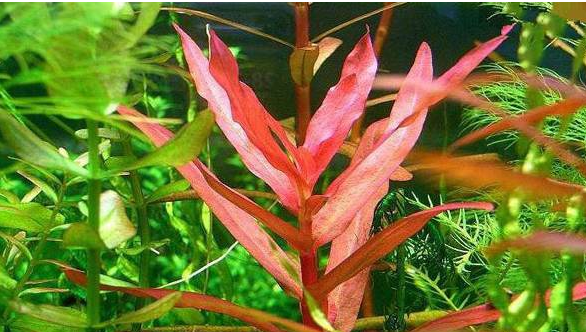
Dicotyledonous plant, aquatic grass. Water grass is different from water grass. Water grass often grows in puddles and paddy fields in wetlands. The stems creeping on the ground are green with a hint of red. The grass stems are slightly thicker than other water grasses, with a light specific gravity and great buoyancy in water. The leaves on the water are ovate and opposite, with a green and reddish color. They are easy to bloom in autumn and form red fruits. The fruits are very small and grow in the axils of leaves. Growing in an aquatic environment, its water leaves are broadly linear and opposite, without petioles, with pinnate veins, and some variants have obvious network-like veins. When the growth conditions are good, the leaf area will increase and lengthen. It is usually red and is a very decorative water grass. However, whether its color shows the most beautiful bright red is closely related to the light environment (light quality and light intensity) and the quality of fertilizer. It has a wide adaptability to water quality and is not difficult to cultivate.
Small opposite leaves
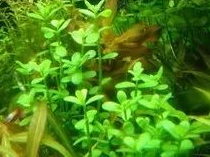
Dicotyledonous plant, aquatic water grass. Water grass has the same shape as water grass. Water grass has green to brown stems, and cross-opposite oval leaves grow on the stem nodes. The leaves are dark green and thick. Flower stems grow from the axils of the leaves, and small lavender flowers with 5 petals bloom. It is drought-resistant and can grow on ordinary land. Water grass can be directly transformed into aquatic type by transplanting it into water. However, when the water temperature is too high, water grass often has leaf fall when it is first transplanted. The leaves of water grass are obovate to oblong, with emerald green color. It has considerable tolerance to changes in water quality and strong vitality, which is very suitable for novice cultivation. The growth rate of water grass is not as fast as that of water grass. Under low light, its growth is extremely slow. Generally speaking, this is a very strong water grass. Even if no carbon dioxide is input, only nutrients are added, it is also easy to cultivate.
Fine-leaved water celery
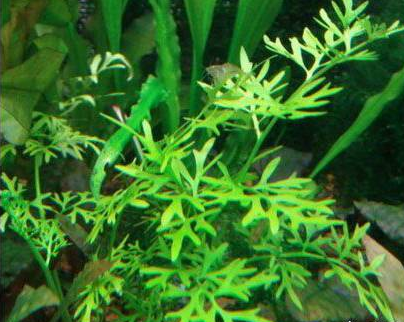
Fern, aquatic grass. Water grass is the same type as water grass, but the growth form of water grass is changeable. Its water leaves are sometimes the same type as the water leaves, and sometimes change from pinnate leaves to branch leaves. Water grass has strong vitality and can grow and reproduce rapidly in wetlands. Water grass can gradually transform directly into water grass. Water grass has deeply or fully divided alternate pinnate leaves, the leaves are light yellow-green to blue-green, and the leaves are quite soft. When reproducing in water, daughter plants can be reproduced from various parts of the mother leaf. They should be separated and cultivated to avoid affecting the growth of the parent plant. It can survive under low light, but it is better to cultivate under high light. It can continue to grow even if it floats on the water. Although it can adapt to a wide range of water quality changes, it is still necessary to avoid changes too fast, otherwise it will have a very adverse effect on growth.
Newton grass
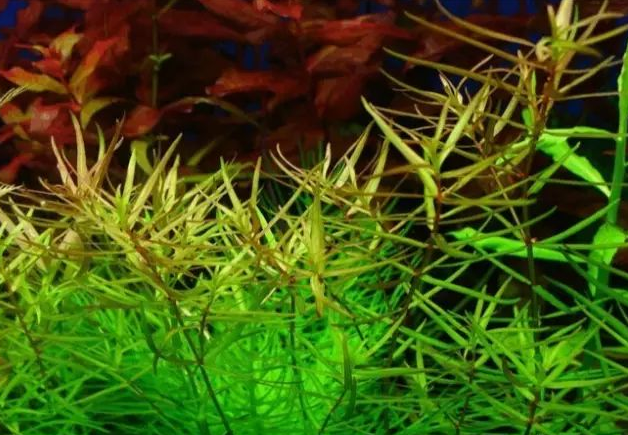
Newton grass genus is distributed in southern North America and Mexico
Morphological characteristics: perennial emergent or submerged herb. The grass is slender and graceful, and its origin is in the waters from Texas, Minnesota and other states in the United States to Mexico. The stem is thin and upright, with needle-shaped leaves, light green, opposite, single veins, sharp front ends, and the top turns red when close to the light source. It can bloom red flowers in the water and is very easy to branch. Cultivation points: Strong light is required for the cultivation of Newton, which is a very important factor. In addition, it prefers soft water and high carbon dioxide waters, and is also very sensitive to changes in water quality. If there is insufficient light, the GH value is high, and there is a lack of nutrients, the internodes of the water grass will become shorter, and the lower part of the stem will easily wither and die.
Big red leaves
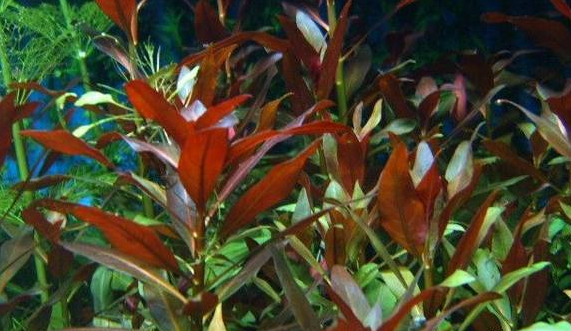
According to the classification of aquatic plants, the big red leaf belongs to the stem aquatic plant; according to the classification of landscape, the big red leaf belongs to the middle and background aquatic plant; according to the classification of growth morphology, the big red leaf belongs to the upright aquatic plant; according to the biological classification of biological affinity, the big red leaf belongs to the dicotyledonous aquatic plant. When the big red leaf is a water grass and an underwater grass, the leaf shape is three spirally arranged call leaves, which is obviously different from the cross-opposite leaves of other aquatic plants of the same genus. The leaf shape is lanceolate.
When the big red leaf is an aquatic grass, its plant body is red only in winter and grows on the ground. The leaf color in other seasons is green, and the stem remains red, but grows upright. It will bloom from the leaf axils, but the flowers are not obvious.
When the big red leaf is an underwater grass, it usually changes from light green to pink and then to bright red and maintains, which looks quite beautiful.
Most red water plants are difficult to cultivate, but the big red leaf is one of the few red water plants that is easier to cultivate. As long as the water plants are cultivated in the aquarium, when they are first planted, with the addition of carbon dioxide and fertilizer, they will begin to take root and sprout after about a week, and some of the original water leaves can gradually become submerged. There is no need to worry about the water quality, but it should be noted that the light must be strong.
Cuban leaf bottom red
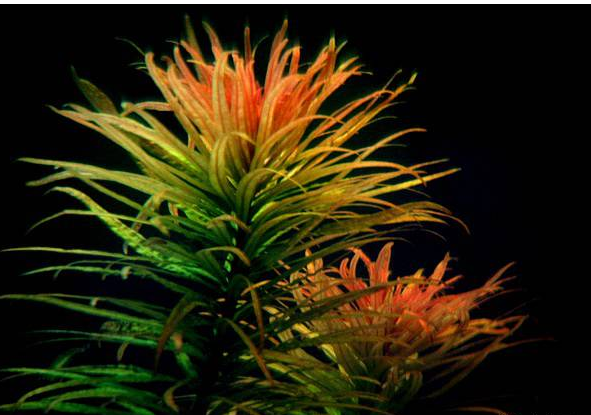
Characteristics: The appearance is similar to that of the louver, and it is easy to cultivate. The whorled leaves are numerous, dense, and oblong. Under strong light, the new leaves will have red veins, which is very beautiful. It is a dicotyledonous plant, an aquatic plant. Its water leaves are long and oval, cross-opposite, with obvious veins. The yellow flowers bloom from the axils, which are large and obvious. They may be red, pink, tea or coffee, depending on the season and the cultivation conditions. Its underwater leaves are more slender and long oval, somewhat like willow leaves. The leaf color is turquoise, pink or orange-red, depending on the cultivation conditions. Leaf length: 8~250px, thin leaves, with a sense of elegance. This species grows fast, with obvious veins, and the leaf stalks and leaves have a waxy feel. It is easy to cultivate. If carbon dioxide and fertilizer are added under strong light, the leaves will appear blood red. For reproduction, just cut the top buds or side buds and insert the stems into the sand.
Pink Tiger Ear

Dicotyledonous plant, aquatic plant. This water plant is a variant of tiger ears, and is famous in the aquarium world for its dreamy pink color. Its aquatic and underwater plants are not much different from tiger ears, but they grow slower, and the underwater plants can sometimes express pink genes, which is somewhat different from tiger ears. Pink tiger ears are easy to survive in aquariums, but it is not easy to grow beautifully. Generally, they are mostly grown in light green, which is very similar to tiger ears. If you want to grow them in pink, you must pay more attention to the light intensity and nutrients. For example, under strong light, relatively low temperature, high carbon dioxide, sufficient nutrients but low nitrogen and low phosphorus conditions, pink water plants can be grown more easily. In addition, cultivation in soft water with low hardness and weak acidic water has an indirect effect of promoting color development. .
Red Sun
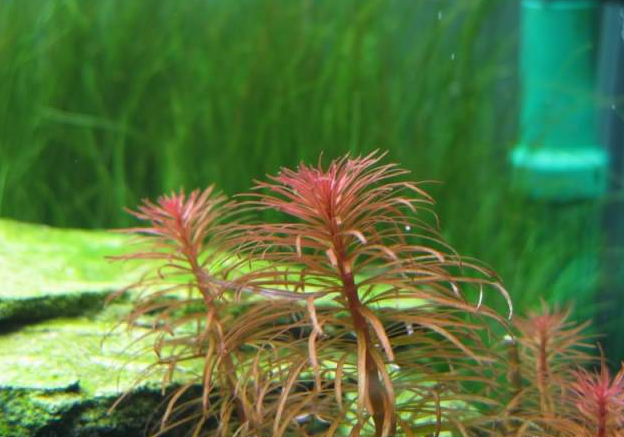
This grass is a dicotyledonous plant, an upright aquatic plant. It is about 375px tall, with slender leaves. It needs slightly acidic and soft water, and must add CO2. The water transfer process is easier than other red aquatic plants, but the leaves are prone to bleaching, which mostly occurs in an overly alkaline environment. Of course, the lack of trace elements can also cause this phenomenon. Although the Red Sun is widely loved by grass lovers, it is not easy to cultivate. During the cultivation process, the top of the leaves are prone to bleaching and then melting. The reason is unknown. To cultivate this grass, first of all, the light must be strong. The carbon dioxide must be sufficient. On this basis, appropriate fertilization can achieve the goal.
Saxifraga
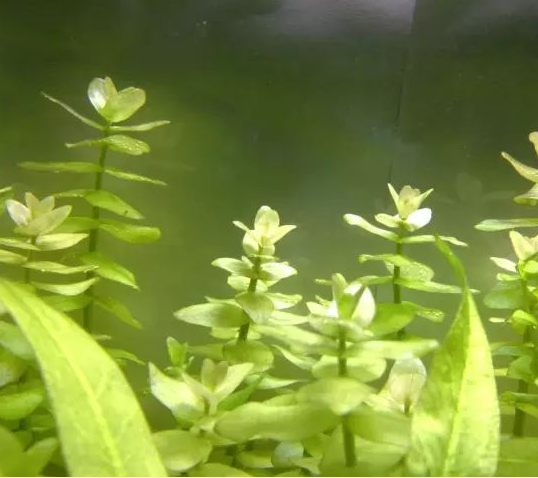
Dicotyledonous plant, aquatic water grass. The stems of water grass are covered with dense hairs, and there is a special odor emitted by the plant body. There are few insect pests, and the whole plant feels solid and heavy. The leaves are opposite, emerald green, and oval. The strong runners grow white roots from each node, like a stem growing on the ground. It has strong vitality and can grow well even in poor land. But its drought tolerance is slightly worse than that of the opposite leaves, so its cultivation environment is best to be humid. After the fall, small flowers with purple veins will grow in its leaf axils, with 4 petals and a long flowering period. After being dissolved in water, the hairs of the plant body completely disappear, the leaves are thin, yellow-green, and the brown veins are very similar to the patterns. The grass is elegant, easy to cultivate, and quite popular. It has good adaptability to changes in water quality and temperature. Moderate fertilization is very helpful for its growth. When the fertilizer is high, the stems become thicker and the leaves become larger. It may bloom in water.
Red silk and green leaves
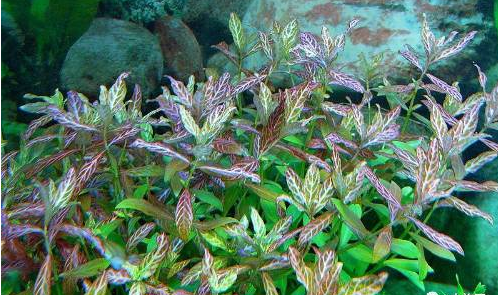
Positive background grass, need a lot of light, easy to grow positive grass, can be used as middle to background grass, if you want it to show pink color, need strong light, the light color of the leaf veins is believed to be caused by a virus that blocks the formation of chlorophyll in the leaf veins, making the leaf veins turn white, but the virus does not affect other aquatic plants in the aquarium.
Leopard Lilac
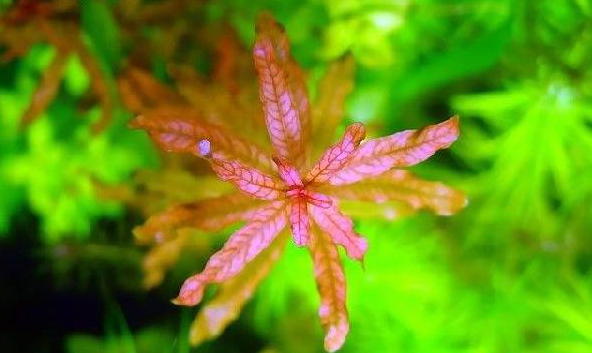
Characteristics: Leopard lilac is very difficult to plant. The water quality environment must be soft water with weak acidity, and an appropriate amount of carbon dioxide must be added to the water to adapt better; under good light, the leaves will gradually turn yellow and orange in appearance, and the growth height is 20-40 cm
Cranberries
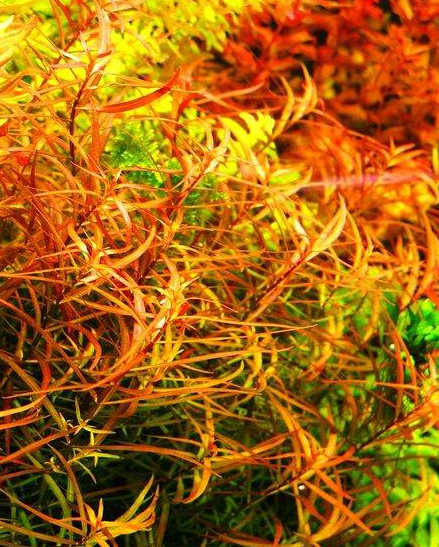
Cranberries are dicotyledonous plants, aquatic plants. Water grass is different from water grass. The leaves of water grass are lanceolate, cross-opposed, and the smallest in the same genus. The bottom of the leaves and the stem are red, but the whole water grass is bright green when viewed from top to bottom. Yellow flowers can bloom from the axils. The leaf shape of water grass has changed greatly, the leaf length has increased significantly, and the leaves are as sharp as needles. It likes strong light and is somewhat difficult to cultivate in an aquarium. As the name suggests, when grown in water, the leaves will turn strawberry red. Not only is it difficult to cultivate, it is even more difficult to grow well, so it is not suitable for beginners. It takes at least 2 months to plant water grass directly in an aquarium to make it completely submerged. In addition, its growth rate is relatively slow, so if you want to appreciate its beautiful grass posture, you may need some patience.
Green Leaf Grass
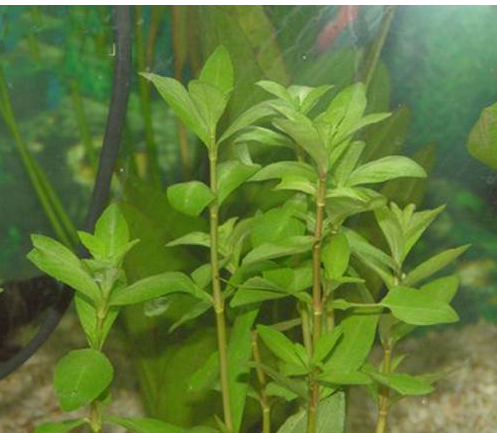
Greenleaf grass is a dicotyledonous plant, an erect aquatic water grass. Water grass has lanceolate cross-opposed leaves, and the leaf color is emerald green. There are several variants, and although their leaf widths vary, after being planted in the aquarium, the underwater leaves that grow are very similar. Its underwater leaves are narrow lanceolate, as soft and light as willow leaves, so it was formerly called “willow grass”. The color of the underwater leaves can range from green, tea color to coffee color, depending on the cultivation conditions, but it seems that emerald green is more popular with most people. Under high light and high fertilizer, it can grow above the water surface, otherwise, it will grow horizontally and float. It grows quickly and must be pruned in time. When the water quality and fertilizer conditions are poor, its leaves become transparent, and the leaf shape is smaller and thinner, which is a sign of poor growth, so it can be used as an indicator of insufficient fertilizer.
Red Butterfly
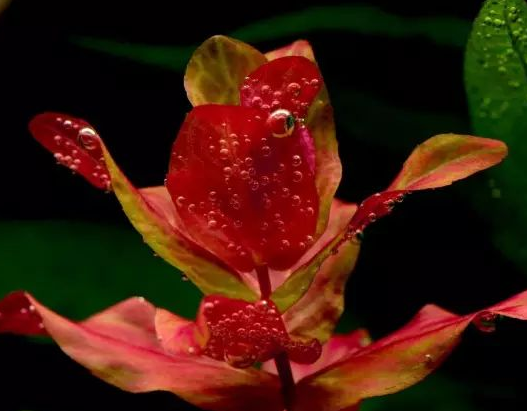
The red butterfly is a dicotyledonous plant, an aquatic aquatic plant. The difference between aquatic plants and aquatic plants is particularly large, and it is not only a difference in body shape, but also a difference in color. When the red butterfly is an aquatic plant, the leaves are opposite, round, and hard. The leaves of aquatic plants are lanceolate, elliptical, oval, etc., with many variations. The leaves are thin and very soft, like beautiful petals. The posture of the aquatic plant is like a red butterfly, which is also the origin of the name. It is very moving in the water. When the red butterfly is in the water, the color will vary with the light quality and water quality, mainly determined by the concentration composition of the three pigments: anthocyanin, chlorophyll and carotene. When the proportions of the three pigments are different, the color of the red butterfly will naturally be different.
Green butterfly
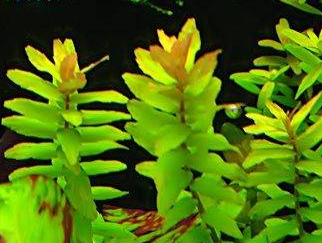
Rotala macrandra is a dicotyledonous plant, an aquatic plant. The scientific name of Rotala macrandra can also be written as Rotala sp., because it is still unclear whether it is a variant of Rotala macrandra, but the ecology of the two aquatic plants is quite similar, so the scientific name Rotala macrandra “green” is also acceptable. The surface of its aquatic leaves is yellow-green or cyan, and the back of the leaves becomes slightly light red. If it can be cultivated with strong light, the top leaves will all turn pink, and the round and soft leaves will be wavy, becoming very beautiful. When cultivated in an aquarium, as long as there is strong light, and the nutrients and carbon dioxide concentration in the water are sufficient, it can grow well and grow fast. It is not difficult to cultivate it, and it can be cultivated even in a tank without adding carbon dioxide, but the growth rate will be limited.
Leopard Red Butterfly
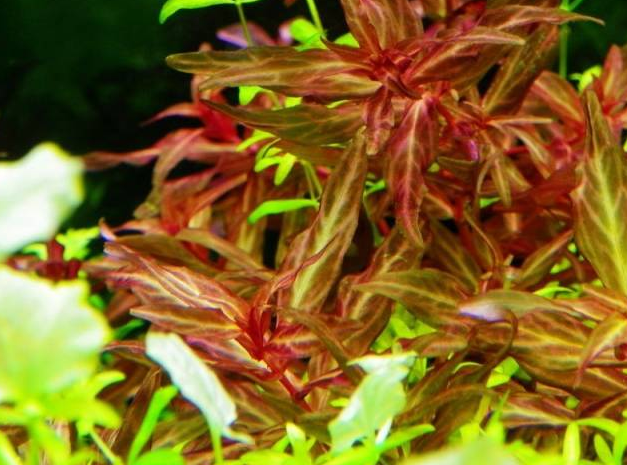
The characteristic of the leopard red butterfly is that the veins can be yellow, but the leaf flesh maintains the red color of the red butterfly, so that the pattern of the leopard red butterfly can be shown. In fact, the leopard red butterfly is a variant of the red butterfly, but it is more popular than the red butterfly. The water leaves of the leopard red butterfly are the same as those of the red butterfly, and their cultivation conditions are almost the same, but there are differences in the patterns of the underwater leaves of the two. In fact, it is not easy to grow leopard red butterflies. It is usually closely related to the cultivation techniques, mainly related to the type of fertilizer and the fertilization techniques. If you want to make the leaf veins appear yellow and highlight the beautiful patterns of the leopard red butterfly, you need to work harder on the use and control of fertilizers, so that you can raise beautiful leopard red butterflies.
Small bamboo leaves
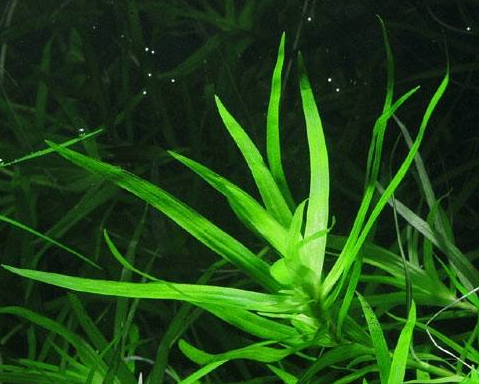
Small bamboo leaf is a monocot, an aquatic water grass. Water grass is the same type as water grass, but the leaves of water grass are lanceolate and alternate, the leaves are shorter and narrower, the leaf tips are not so sharp, the leaves are thicker and bright green. It can grow in moist soil and has strong reproductive capacity. The flowers are lavender and grow at the top. Small bamboo leaf water grass can be directly transformed into water grass, and it also becomes narrow and lanceolate in water. The leaves are yellow-green in color, very similar to bamboo leaves, which is also the origin of the name of small bamboo leaf. The leaves are 3-125px long and 10px wide. The stem is relatively thick. When growing, the top of the stem grows vertically upward, while the stem body tilts horizontally. This feature is unique to small bamboo leaves. The internodes near the top of the stem are shorter than the internodes in the center of the stem, and the leaves are denser. It is very easy to grow and take root below the stem nodes in the horizontal part of the stem body. The stem with roots can be cut for reproduction, and the survival rate is very high. Bamboo shoots can adapt to a wide range of growth conditions and are relatively simple to plant, but they are sensitive to water and light quality. Once the water and light quality change dramatically, the bamboo shoots will stop growing and the top leaves will wither. When there is no fertilizer and carbon dioxide, it usually does not grow normally. However, when the cultivation conditions are met, the growth rate is quite fast, and many secondary plants will grow from the side branches, so timely pruning is required to maintain a good shape to avoid blocking the light of the foreground grass.
South American small louver
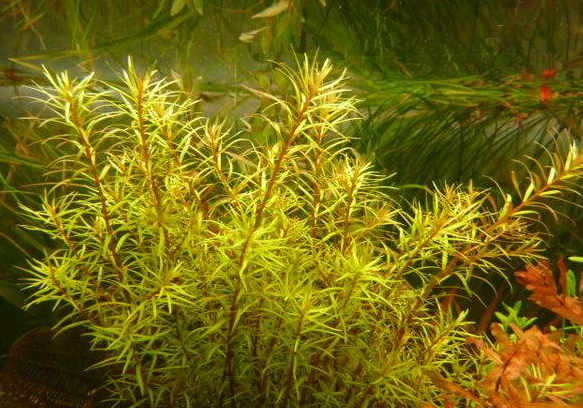
As can be seen from the above, the South American hyacinth is native to South America. It grows at a relatively high temperature and requires acidic water quality, but it will grow even when this standard is not met. The South American hyacinth is a dicotyledonous plant, and it is very aquatic. This aquatic plant native to South America is very closely related to the water pine leaves. Whether it is aquatic leaves or aquatic leaves, it is not easy to distinguish, especially the aquatic leaves. Usually in the wild and riverside wetlands, the red stems grow 3-4 whorls, yellow-green, and the leaves are wider than the water pine leaves. They can better maintain the red stems and will not turn green. The growth rate is medium and the cultivation is quite easy. Even in the water plant tank without adding carbon dioxide, as long as a little bright light is given, it is possible to cultivate it. The reproduction method of the South American hyacinth is lateral bud reproduction. The addition of fertilizer will increase the growth rate and increase the ornamental value of the plant.
Red lilac
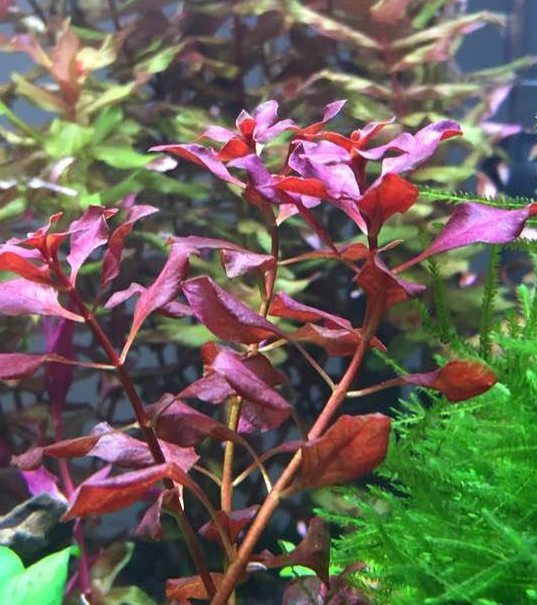
Red lilac is distributed in North America. Its leaves above water are small oval and cross-shaped. Except for the red bottom and stem, it looks like green water plants from a distance. Its leaves below water are narrow lanceolate, 3 cm long and 0.4 cm wide. Most of the leaves sold in the market are above water. If it is moved to water for cultivation, it will slowly become underwater leaves. During the water transfer process, the water quality must be slightly acidic, otherwise it will easily wither. In fact, it is not difficult to grow red lilac, but it is a test of technology to make it grow a beautiful scarlet color, because if the conditions are not very good, its color will be yellow-green or light orange, which cannot highlight the characteristics of red water plants.
